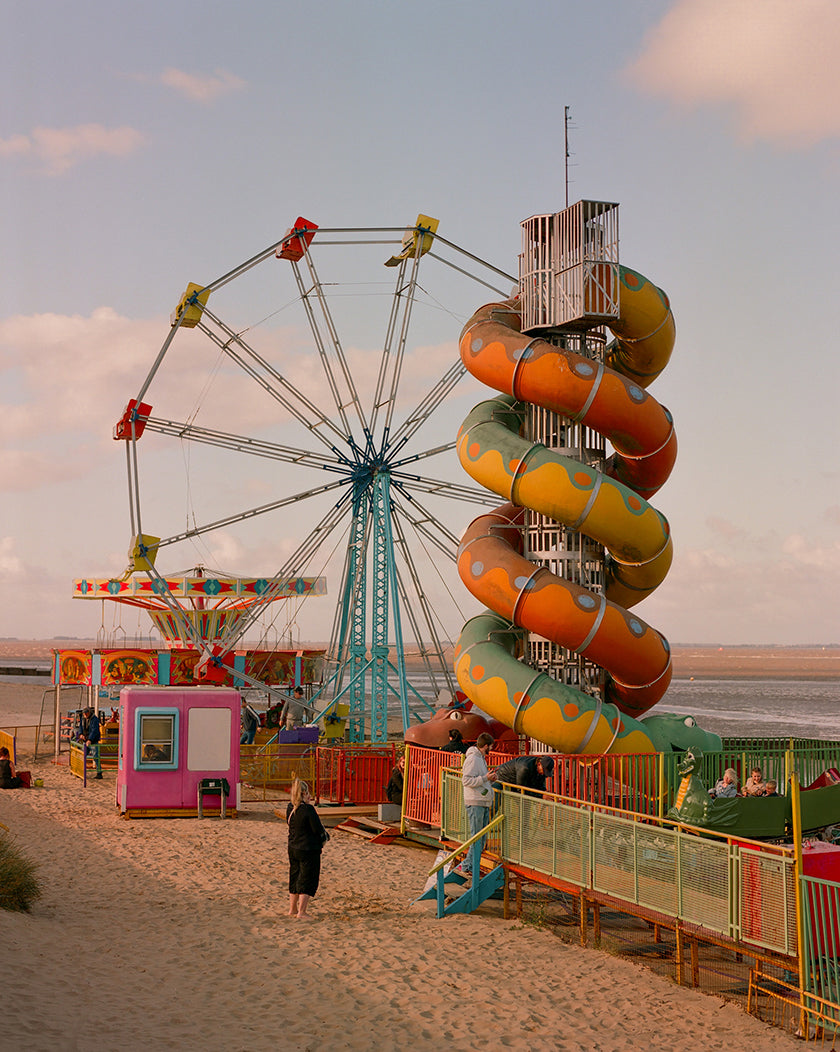Your Cart is Empty
Buy a book, plant a tree.
Max Miechowski on his photographic homage to fading seaside communities

Separating the eastern edges of England from Europe are the cold, tempestuous waves of the North Sea that have long been the bedrock of culture and economy along the East Coast. On a clear day, Victorian facades of once-bustling towns rise from the ground and compete with industrial silhouettes and nuclear power plants to form the skyline of this region. At the turn of the 20th-century, a stretch of coast from Skegness to Southwold became a glistening vacation destination that was romanticized in popular culture, but the arrival of budget airlines accelerated the East Coast's economic dwindle. Labeled as forgotten and divergent from the cities, photographer Max Miechowski shines his lens on communities whose existence has been mystified by mainstream media.

"Although it certainly wasn't my first time visiting the coast, one of my most vivid memories is of a family trip to Wells-Next-The-Sea. I remember crab fishing and then catching the miniature railway to the beach whilst sipping my first ever can of Dandelion & Burdock," says Miechowski. Aged between 5 to 6 at the time, he recalls going to the coast with a bag full of 2 pence copper coins to hopefully win big at the fairground machines. Plastic rings were a good haul. His childhood was woven with romantic memories of the East Coast. Decades of economic decline and a succeeding European Referendum tarnished the image of these communities, a depiction of the political divide exemplified this region's drift to ruins by the media.

Miechowski has watched the decades-long transformation of a place he held fond memories of, which spurred his series A Big Fat Sky. Taking the title from John Cooper Clarke’s Our Coastal Poem, his intention was to visually impersonate the kind of British seaside depicted in the poem. When asked what defines the people and mentality of England's East Coast, he replies, "I think there is a definite feeling of pride for those either living along the East Coast or for those that grew up there but have moved away. There's a charm to it all that really stays with people, and forms a part of who they are." Since publishing his series, dozens of locals have messaged him to congratulate his portrayal of these towns, which aren't often seen through a romantic guise.

The decline of tourism and fishing industries have punctured the economic lungs of the shoreline, even more so during the pandemic. "The age of cheap international travel had a huge impact on these towns, with people suddenly having access to more luxurious getaways," he explains, "Hopefully, the recent travel restriction will help to generate new interest in these towns and bring a boom to the local economy.” A Big Fat Sky is a nostalgic homage to an era of English culture before overseas budget travel existed. Once bustling and now dying in some cases, it shows a side rarely documented or discussed. We asked what he hopes to teach about this way of life and the forgotten coastal towns, he replies:

"The coast in Britain is well documented, but I really wanted to offer a new perspective through this body of work. I was keen for the images to connect with British people, and to their memories of the coast, but I also wanted to show this part of the world to a more global audience, and to create curiosity and intrigue about the East Coast. Beyond its reputation for gritty towns and tacky holiday resorts, it is a fascinating place with a rich history and complex narratives that, for me, speak so perfectly of life in Britain and of our relationship to the sea."

Traveling along the murky eastern shoreline, against the vastness of the oceanic background, Miechowski maps the coastline while asking questions about how life on these damp rocks shape collective experience. The pandemic might change the fortunes of the East Coast, but for now, A Big Fat Sky acts as a subtle love letter to the deindustrializing seaside towns of the world. Invigorated by the communities, Miechowski intends on developing new work that focuses on one aspect of life on the coast in finer detail.
Discover a world of literature visual culture through a selection of gestalten titles.